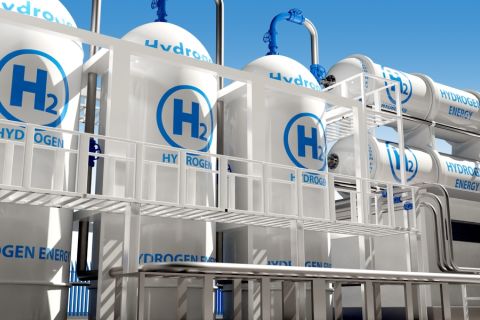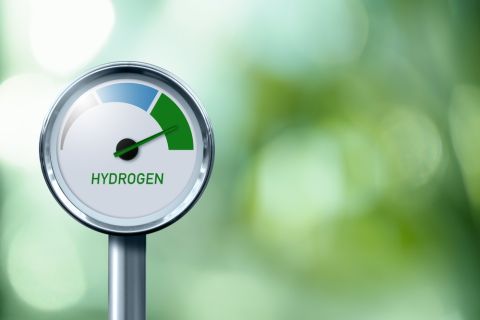
The ABB virtual multiphase flowmeter predicts oil, gas and water rates from wells. (Source: ABB)
The challenge of measuring combined flows of oil, gas and water to help gauge the quality and longevity of an oil or gas well and find ways to maximize plan throughout has been a longstanding one dating back to the earliest days of exploration.
The various methods developed to enable these flows to be measured have each brought their own advantages and disadvantages, which have had to be weighed against each other to determine their overall viability.
Full separators, for example, which separate and individually measure the oil, gas and water phases using individual single-phase flowmeters, are known for their high accuracy and have been popular across the oil and gas industry for many years.
However, their use of gravity to separate the phases can mean that it can take hours or even days to obtain a measurement, which typically only provides an accurate indication of well efficiency for a specific point in time. As large tanks fitted with an array of ancillary equipment, they can significantly add to the weight of an installation, making them unsuitable for offshore platforms where weight is a critical concern. They are also expensive to purchase and maintain, with cleaning needed after every sample test.
Partial separators
Partial separators are another technique that addresses many of these disadvantages. Smaller, less costly and offering a much faster response than full separators, partial separators can be transported between different wells to allow testing in situations where a full separator would be economically unfeasible or too large to install. However, as with full separators, the measurement produced is only indicative of a given moment and will not provide a full picture of actual conditions.
Multiphase flowmeters have enjoyed increasing popularity in recent years as a means of providing continuous measurement. Combining a variety of measurements into one instrument, including temperature, pressure, differential pressure, ultrasonic and electromagnetic flow, plus other parameters such as density, multiphase flowmeters can offer a greatly reduced footprint and long-term cost saving compared to conventional test separators. Unlike test separators, they also can be used in subsea applications as well as onshore and offshore platforms.
Their ability to measure any changes in the oil/gas/ water ratio on a real-time basis enables them to provide current data that can be used by operators to devise strategies for optimizing production.
Cost challenges
One major drawback of multiphase flowmeters is their cost. As the diverse nature of oil and gas applications rules out standard off-the-shelf solutions, most multiphase flowmeters have to be custom-built to a customer’s specific requirements.
Added to this is their complexity. The inherent complexity involved in setup and calibration, coupled with a dwindling number of engineers experienced in flow measurement, means that many companies can struggle when it comes to the installation, operation and managing a multiphase flowmetering solution.
Consequently, the use of multiphase flowmeters has been largely confined to more prosperous high-yield wells, which are better able to afford and support them. For less prosperous wells, the answer has been either to measure multiphase flows using traditional separation techniques; to carry out intermittent spot testing, inferring measured characteristics for a single well to a longer period and multiple wells; or, in many cases, not to measure at all.
In each case, the limited scope of the available data restricts the ability of operators to make informed decisions that could help them to optimize production.
Physical to virtual measurement
Digital technology is opening new opportunities for multiphase flow measurement in situations that have previously been deemed uneconomical, with cloud technology especially enabling the greater sharing of data that can be widely deployed across multiple wells or entire organizations to help maximize well performance.
An example is the new ABB Ability Virtual Multiphase flowmeter tool. Developed with Arundo Analytics, a software company specializing in large-scale advanced analytics applications, the cloud-based tool uses data from standard instrumentation fitted on a well to calculate real-time individual flow rates for oil, gas and water.
The tool works by using a mathematically based three-phase flow model based on specific data from the user’s well, including
- Information on well geometry and profile;
- Wellhead choke characteristics;
- Pressure, volume and temperature data;
- Fluid compositions from laboratory tests; and
- A minimum of three months’ operational data.
By constantly updating the model with data from the instruments in the line, the tool enables users the count on an accurate virtual measurement of their multiphase flows.
By removing the need for much of the hardware required for both test separation and multiphase flowmetering installations, the tool offers users numerous benefits.
Foremost among these is the ability for users to be able to utilize their existing instrument infrastructure to gather the data needed to feed the tool. Provided the instruments can meet the requirements of the application, any device from any manufacturer can be used. In this way, users can potentially save hundreds of thousands of dollars on the purchase, setup and support of separation and/or multiphase flowmetering installations.
Furthermore, the ability of the tool to use existing instruments rather than multiphase flowmeters eliminates the need to find skilled engineers capable of carrying out installation, commissioning and calibration work.
Another key benefit conferred by the tool is the minimization of well testing. With no need to reroute platform wells or shut down subsea wells to physically assess multiphase flows, the tool can help prevent the loss of potentially thousands of barrels of oil per day.
The inherently scalable nature of the tool means that organizations that previously have been unable to continuously measure their multiphase flows can now do so at a fraction of the cost that would have been required to put the necessary infrastructures in place. Once an organization has subscribed to the tool, it can be made universally available, enabling it to be used worldwide to monitor and compare the performance of multiple wells.
By providing easy access to well data, problems associated with information becoming stranded within specific departments are overcome, allowing sharing of data and calculations both locally or globally.
Accessing data on well performance through the tool is straightforward. Data on multiphase flow from different wells can be stored in a customer’s data repository and accessed when and where needed via a customer dashboard, enabling operators to readily identify areas for potential improvements in well operation.
Summary
By coupling the benefits of in situ, continuous multiphase flow measurement with the ease, scalability and intelligence of digital technology, virtual multiphase flowmetering presents an economically viable opportunity for operators of all sizes to maximize well performance.
Have a story idea for Tech Watch? This feature highlights leading-edge technology that has the potential to eventually address real-life upstream challenges. Submit your story ideas to Group Managing Editor Jo Ann Davy at jdavy@hartenergy.com.
Recommended Reading
Baker Hughes Marks Hydrogen Milestones
2024-01-29 - The energy technology company is involved with several hydrogen projects as it works to accelerate the hydrogen economy.
Braya Renewable Fuels Begins Commercial Operations at Revamped Refinery
2024-02-23 - The Come By Chance refinery in Newfoundland and Labrador produces renewable diesel instead of petroleum diesel.
Shell Taps Bloom Energy’s SOEC Technology for Clean Hydrogen Projects
2024-03-07 - Shell and Bloom Energy’s partnership will investigate decarbonization solutions with the goal of developing large-scale, solid oxide electrolyzer systems for use at Shell’s assets.
Stonepeak Joins Shizen to Form Asian Onshore Wind Platform
2024-03-26 - Stonepeak will have an 80% interest in the onshore wind energy platform, with Japan-based Shizen retaining the remaining 20% interest.
Bill Gates: ‘A Heroic Effort’ is Beginning, but Climate Goals Still Won’t be Hit
2024-03-26 - Bill Gates said during CERAWeek by S&P Global that the energy transition was picking up speed but still wouldn’t be able to achieve the climate goals established under the Paris Agreement of 2015.





